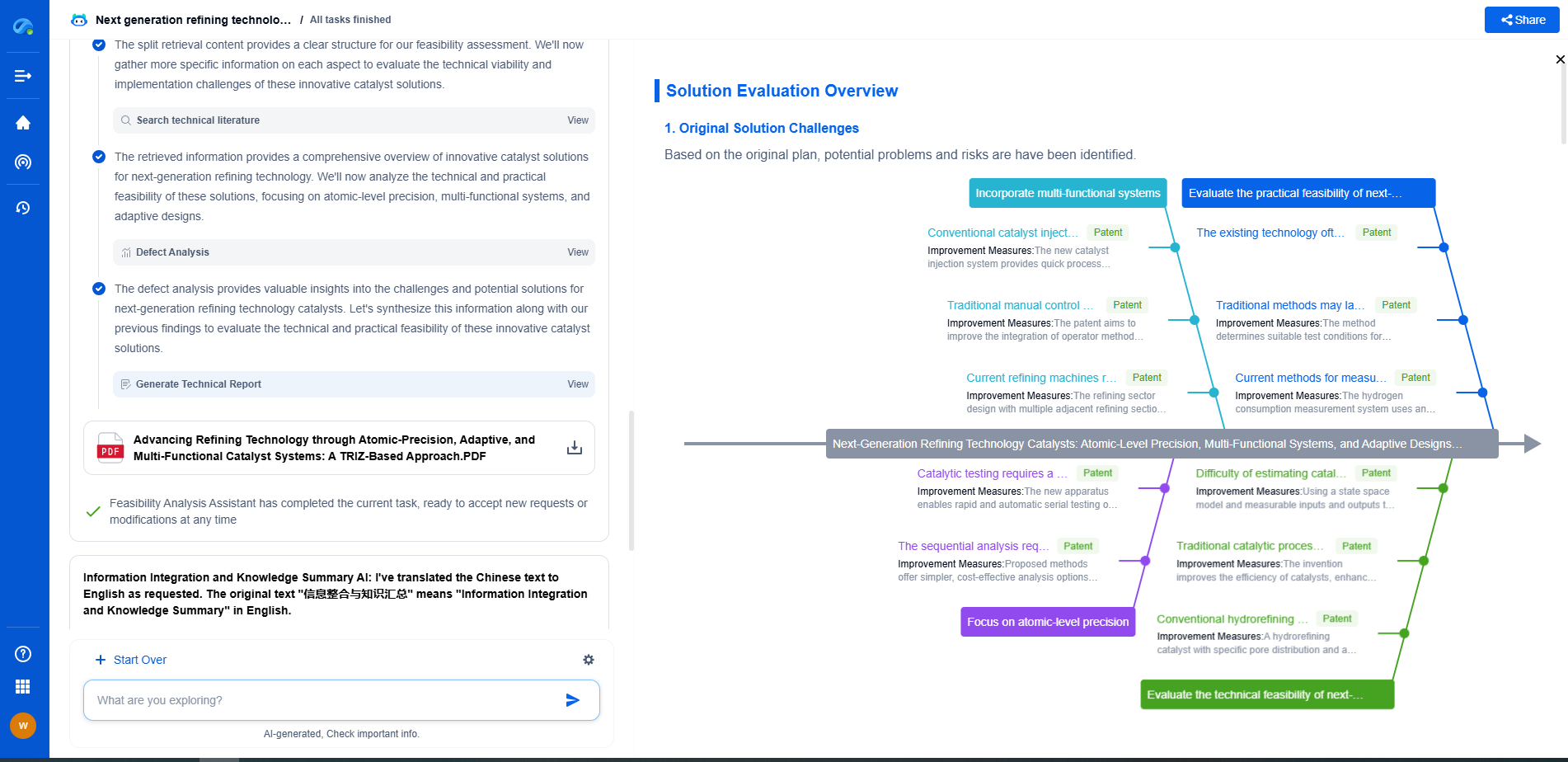Understanding velocity and acceleration limits in robot design
JUN 26, 2025 |
The Importance of Velocity and Acceleration in Robotics
In robotics, velocity refers to the speed at which a robot or its parts move. Acceleration, on the other hand, is the rate of change of velocity. Understanding these concepts is fundamental because they directly influence a robot's performance, precision, and safety.
When setting velocity limits, designers must consider the operational environment and tasks the robot will perform. High velocity is advantageous for tasks requiring quick movements, such as in assembly lines. However, it can compromise precision and increase wear and tear.
Acceleration limits are similarly critical. Rapid acceleration can lead to instability, especially in mobile robots or those with articulated arms. It may also cause damage to delicate components or the objects being manipulated. Therefore, balancing speed and precision is a significant design challenge.
Factors Influencing Velocity and Acceleration Limits
Several factors influence the appropriate velocity and acceleration limits when designing a robot. First is the robot's application. Industrial robots require different parameters than service robots. For example, a robot designed for precision surgery will prioritize precision over speed, while a robot for warehouse operations may need higher speeds.
Another factor is the robot's structure. Heavier robots generally have lower velocity and acceleration limits due to inertia. The design and materials used in the robot's construction also affect these limits.
Moreover, the control system plays a vital role. Advanced control algorithms can optimize speed and acceleration while maintaining stability and accuracy. Feedback loops and sensors further enhance a robot's ability to operate within safe limits.
Balancing Performance and Safety
One of the primary challenges in robot design is achieving a balance between performance and safety. High-speed robots can increase productivity but pose risks to human operators and themselves. Safety features such as emergency stop functions, collision detection, and compliant materials can mitigate these risks.
Regulatory standards also guide design limits. Organizations like ISO have established safety standards that dictate maximum allowable speeds and accelerations for different classes of robots. Compliance is not only essential for legal reasons but also for ensuring operational safety.
Optimizing Designs for Specific Applications
Designers must tailor velocity and acceleration parameters to the specific application of the robot. In manufacturing, robots are often required to perform repetitive tasks quickly and accurately. Thus, they are designed with high-speed motors and precise control mechanisms.
Conversely, robots in healthcare or service industries prioritize gentle handling and precision. Their designs incorporate lower speed limits and smooth acceleration profiles to minimize the risk of injury or damage.
The Future of Robot Design
As technology advances, the boundaries of velocity and acceleration in robot design continue to expand. Innovations in materials, control systems, and AI are pushing these limits further. For instance, AI algorithms can predict and adjust a robot's movements in real-time, optimizing speed and precision.
Researchers are also exploring novel actuators and materials that offer better performance without compromising safety. These developments hold the promise of faster, more accurate, and safer robots that can operate in increasingly complex environments.
Understanding velocity and acceleration limits is not just a technical requirement; it's a fundamental aspect of designing effective and safe robots. By carefully considering these parameters, designers can create robots that meet the demands of their intended applications while ensuring the safety of both the robots and their human counterparts.
Ready to Redefine Your Robotics R&D Workflow?
Whether you're designing next-generation robotic arms, optimizing manipulator kinematics, or mining patent data for innovation insights, Patsnap Eureka, our cutting-edge AI assistant, is built for R&D and IP professionals in high-tech industries, is built to accelerate every step of your journey.
No more getting buried in thousands of documents or wasting time on repetitive technical analysis. Our AI Agent helps R&D and IP teams in high-tech enterprises save hundreds of hours, reduce risk of oversight, and move from concept to prototype faster than ever before.
👉 Experience how AI can revolutionize your robotics innovation cycle. Explore Patsnap Eureka today and see the difference.
- R&D
- Intellectual Property
- Life Sciences
- Materials
- Tech Scout
- Unparalleled Data Quality
- Higher Quality Content
- 60% Fewer Hallucinations
Browse by: Latest US Patents, China's latest patents, Technical Efficacy Thesaurus, Application Domain, Technology Topic, Popular Technical Reports.
© 2025 PatSnap. All rights reserved.Legal|Privacy policy|Modern Slavery Act Transparency Statement|Sitemap|About US| Contact US: help@patsnap.com

